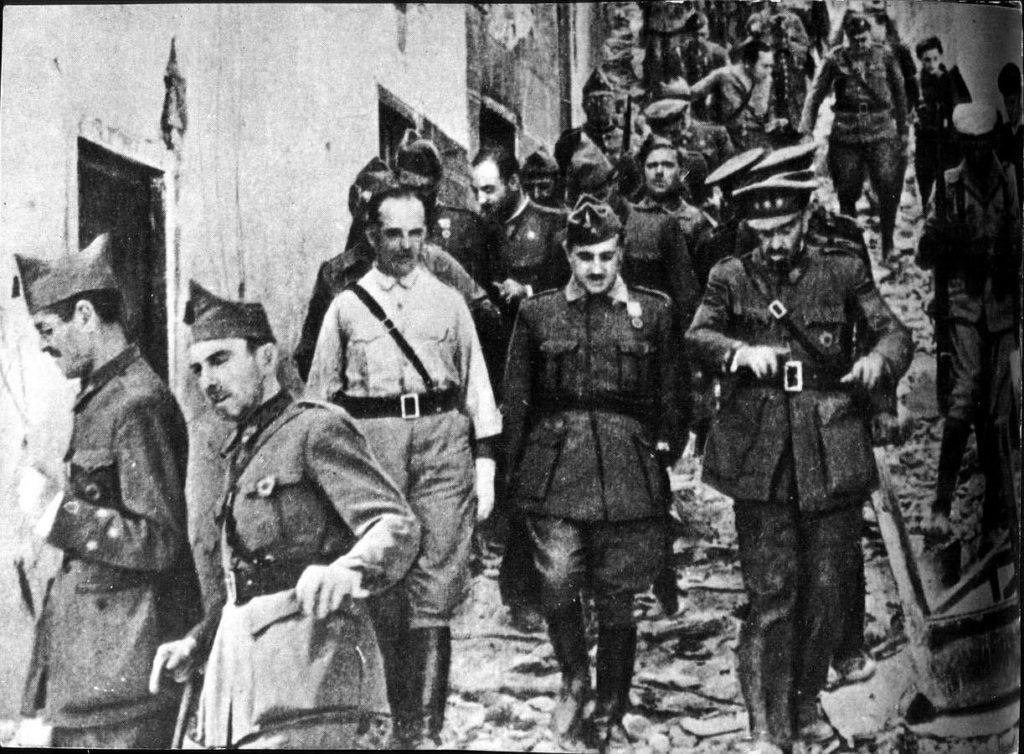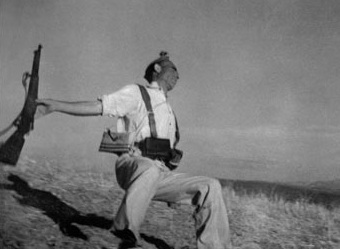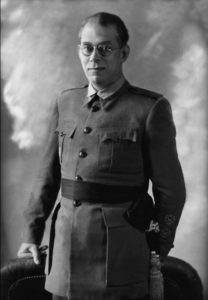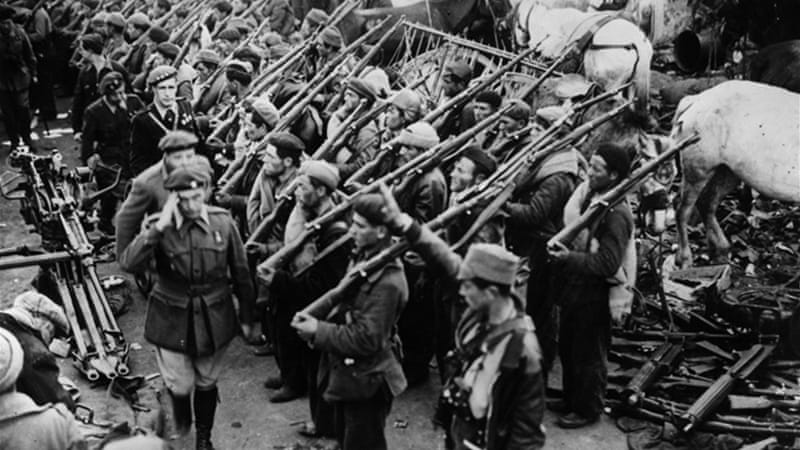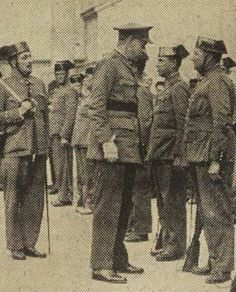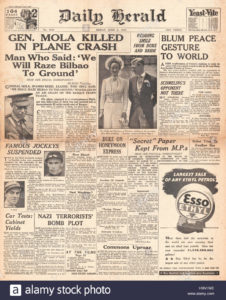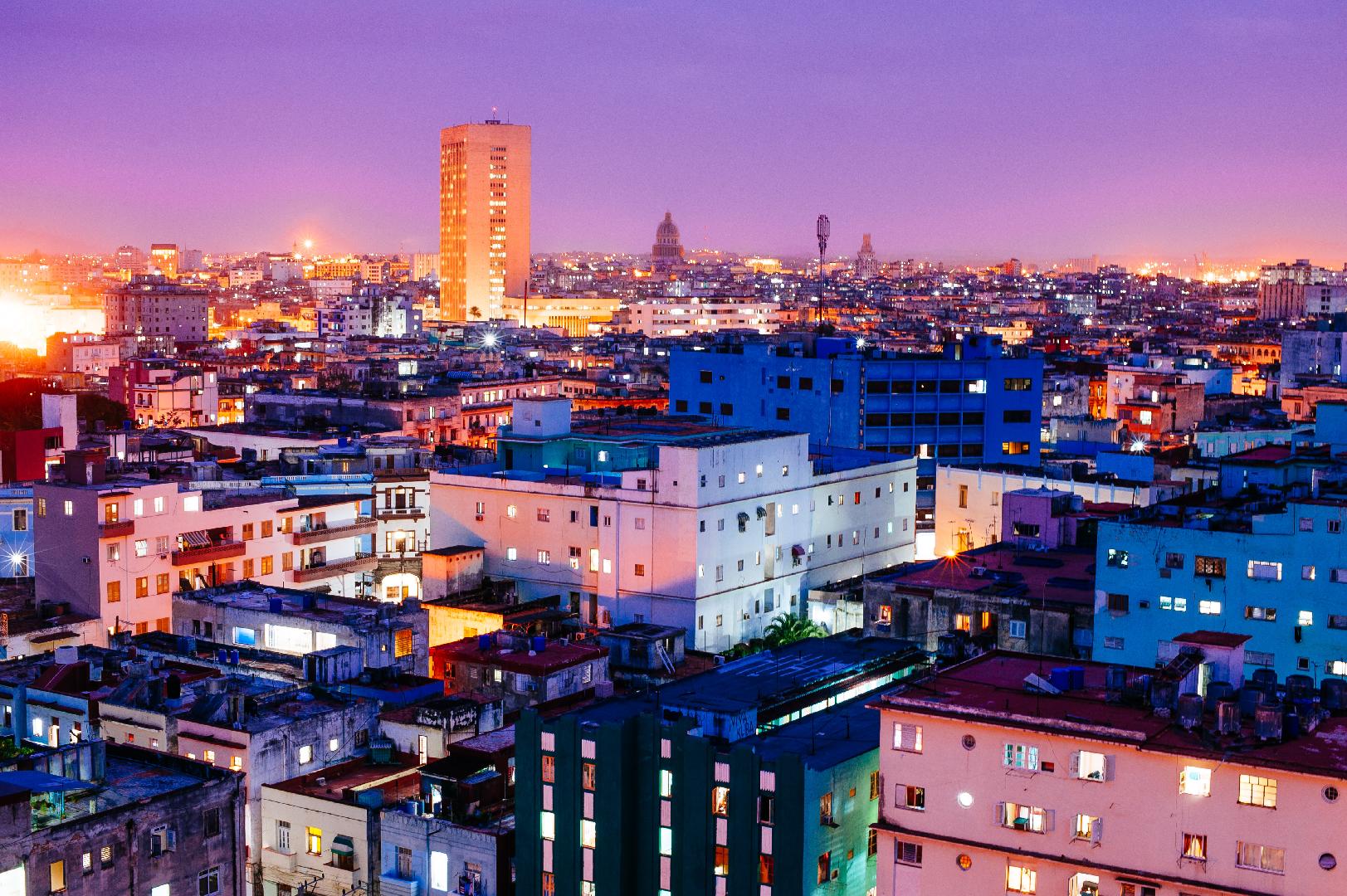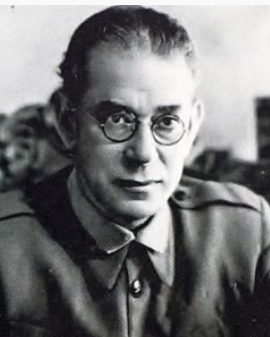 GENERAL EMILIO MOLA VIDAL, THE CUBAN BRAIN WHO TRIGGERED THE SPANISH CIVIL WAR.
GENERAL EMILIO MOLA VIDAL, THE CUBAN BRAIN WHO TRIGGERED THE SPANISH CIVIL WAR.
Although he was born in Cuba, the name Emilio Mola Vidal is practically foreign to the Cubans. In Spain, however, he is remembered as the true instigator of the coup d’état that unleashed a bloody civil war and then culminated in a military dictatorship of almost four decades.
Its history begins in Placetas (Villa Clara), then General Captaincy of Cuba. There he was born, in July 1887, son of a captain of the Spanish Civil Guard stationed on the island and a Cuban, Ramona Vidal, sister of Colonel Mambi Leoncio Vidal.
Emilio Mola only lived in Cuba until after he turned 11. After the “Spanish disaster” with the Spanish-Cuban-American war in 1898, the family decided to return definitively to the once metropolis.
Once in Spain, he entered the Toledo Infantry Academy, where he began a long and distinguished military career that took off first during the dictatorship of Primo de Rivera (1923-30) and then in the Second Republic (1931-end of the Civil War in 1939).
In the first stage he was appointed general director of Security, a post from which he organized a harsh repression against the student and republican movements; while in the Second Republic he was separated from the army to later receive an amnesty and be appointed head of the High Commissariat of Morocco.
It is at this moment when his figure goes down in history as the meticulous planner of the failed coup d’état and for his famous ‘secret guidelines’ where he summarized the methods of repression towards Popular Front sympathizers.
The conspiracy Mola led began to form after the triumph of the left in the elections of February 1936. Then he met discreetly with civilian and military personalities -including Francisco Franco- to shoot down as soon as possible a government that, although there legitimately defeated, they considered that it could lead the country to a proletarian revolution.
The general born in Cuba took the direction of the coup plot and began to write and disseminate a series of circulars that started from violent forms of repression in order to rise to power. “We must warn the timid and hesitant, that he who is not with us is against us, and that he will be treated as an enemy. For colleagues who are not partners the triumphant movement will be inexorable, “read one of the circulars.
In that directive, Mola affirmed that it was necessary “to create an atmosphere of terror”, and to eliminate “without scruples or hesitation to everyone who does not think like us”. “Anyone who is openly or secretly a defender of the Popular Front must be shot,” he emphasized.
According to several bibliographies, Mola did not elaborate a single model of conspiracy for all the Spanish provinces, but designed four according to the presence or not of military forces in them and also depending on the degree of commitment to the rebellion of the generals, chiefs and officers contacted.
Known at that time as “The Director”, once the war began, Emilio Mola Vidal played a transcendental role commanding the military operations of the Army of the North, especially in the area of the Basque Country.
Over time, however, was losing prominence in the conflict as the figure of Franco rose in power. In the middle of the confrontations with the Basque resistance, it decides to fly to Valladolid to meet with the general in order to repress the republican offensive of Segovia, and its plane crashes in Alcocero (Castile and Leon).
Mola never came to witness the triumph of his troops and, as a rival to Franco in the leadership of the rebel forces, his death soon sparked speculation about a possible murder.
According to the Spanish newspaper Libertad Digital, the rumor circulated in the republican zone that Franco had killed Mola, since it was understood that the Cuban was going to preside over the first government that was formed after the capture of Bilbao.
However, the text says, when Mola died, Franco already had absolute power. The Administration of the new State, except in a few provinces, was controlled by pro-Franco supporters.
Emilio Mola Vidal was buried in 1937, far from his native Placetas, in the cemetery of Pamplona. Later, in 1961, his remains were transferred to the monument to the Fallen built in that city.
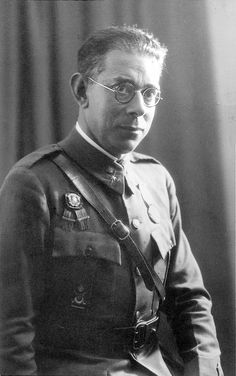 GENERAL EMILIO MOLA VIDAL, EL CEREBRO CUBANO QUE DESENCADENÓ LA GUERRA CIVIL ESPAÑOLA.
GENERAL EMILIO MOLA VIDAL, EL CEREBRO CUBANO QUE DESENCADENÓ LA GUERRA CIVIL ESPAÑOLA.
Aunque nació en Cuba, el nombre Emilio Mola Vidal resulta prácticamente ajeno a los cubanos. En España, no obstante, es recordado como el verdadero instigador del golpe de Estado que desencadenó una sangrienta guerra civil y que luego culminó en una dictadura militar de casi cuatro décadas.
Su historia comienza en Placetas (Villa Clara), entonces Capitanía General de Cuba. Allí nació, en julio de 1887, hijo de un capitán de la Guardia Civil española destinado en la Isla y de una cubana, Ramona Vidal, hermana del coronel mambí Leoncio Vidal.
Emilio Mola solo vivió en Cuba hasta después de cumplir 11 años. Tras el “desastre español” con la guerra hispano-cubana-norteamericana en 1898 la familia decidió regresar definitivamente a la otrora metrópoli.
Una vez en España, ingresó en la Academia de Infantería de Toledo, donde da comienzo a una extensa y sonada carrera militar que despegó primero durante la dictadura de Primo de Rivera (1923-30) y luego en la Segunda República (1931-final de la Guerra Civil en 1939).
En la primera etapa fue nombrado director general de Seguridad, puesto desde el cual organizó una dura represión contra los movimientos estudiantiles y republicanos; mientras que en la Segunda República fue separado del ejército para luego recibir una amnistía y ser nombrado jefe de la Alta Comisaría de Marruecos.
Es en este momento cuando su figura pasa a la historia por ser el minucioso planificador del fallido golpe de Estado y por sus famosas ‘directrices secretas’ donde resumía los métodos de represión hacia simpatizantes del Frente Popular.
La conspiración que dirigió Mola comenzó a fraguarse tras el triunfo de la izquierda en las elecciones de febrero de 1936. Entonces se reunió discretamente con personalidades civiles y militares -entre ellas Francisco Franco- para derribar lo antes posible a un gobierno que, si bien había vencido legítimamente, consideraban que podía llevar al país a una revolución proletaria.
El general nacido en Cuba tomó la dirección de la trama golpista y comenzó a redactar y difundir una serie de circulares que partían de formas violentas de represión en orden de alzarse con el poder. “Ha de advertirse a los tímidos y vacilantes, que el que no esté con nosotros, está contra nosotros, y que como enemigo será tratado. Para los compañeros que no son compañeros el movimiento triunfante será inexorable”, rezaba una de las circulares.
En esa directriz, Mola afirmaba que era necesario “crear una atmósfera de terror”, y eliminar “sin escrúpulos ni vacilación a todo el que no piense como nosotros”. “Todo el que sea abierta o secretamente defensor del Frente Popular debe ser fusilado”, enfatizaba.
Según varias bibliografías, Mola no elaboró un único modelo de conspiración para todas las provincias españolas, sino que diseñó cuatro en función de la presencia o no de fuerzas militares en ellas y en función también del grado de compromiso con la rebelión de los generales, jefes y oficiales contactados.
Conocido en aquel momento como “El Director”, una vez iniciada la contienda bélica, Emilio Mola Vidal jugó un papel trascendental al mando de las operaciones militares del Ejército del Norte, especialmente en la zona del País Vasco.
Con el tiempo, no obstante, fue perdiendo protagonismo en el conflicto a medida que la figura de Franco se alzaba en el poder. En medio de los enfrentamientos con la resistencia vasca, decide volar a Valladolid para reunirse con el general en orden de reprimir la ofensiva republicana de Segovia, y su avión se estrella en Alcocero (Castilla y León).
Mola nunca llegó a presenciar el triunfo de sus tropas y, como rival de Franco en la jefatura de las fuerzas sublevadas, su muerte no tardó en suscitar especulaciones sobre un posible asesinato.
Según el diario español Libertad Digital, en la zona republicana se hizo circular el rumor de que a Mola lo había matado Franco, pues se entendía que el cubano iba a presidir el primer Gobierno que se formase después de la toma de Bilbao.
Sin embargo, asegura el texto, cuando Mola murió Franco ya tenía el poder absoluto. La Administración del nuevo Estado, salvo en algunas pocas provincias estaba controlada por partidarios franquistas.
Emilio Mola Vidal fue enterrado en 1937, muy lejos de su natal Placetas, en el cementerio de Pamplona. Posteriormente, en 1961, sus restos fueron trasladados al monumento a los Caídos construido en esa ciudad.
Agencies/CiberCuba/ Rafa Pérez/ Internet Photos/ Arnoldo Varona/ TheCubanHistory.com
THE CUBAN HISTORY, HOLLYWOOD.



